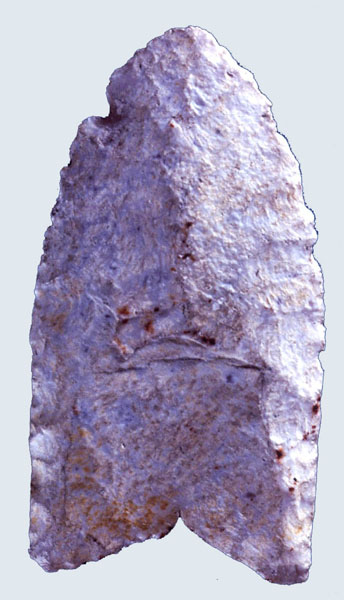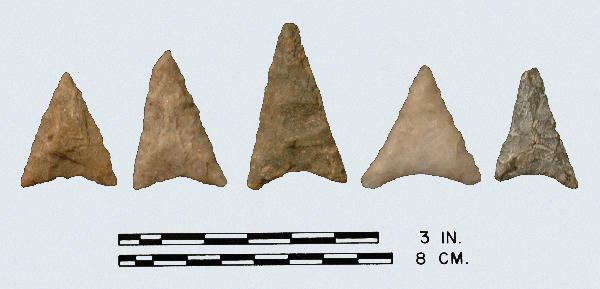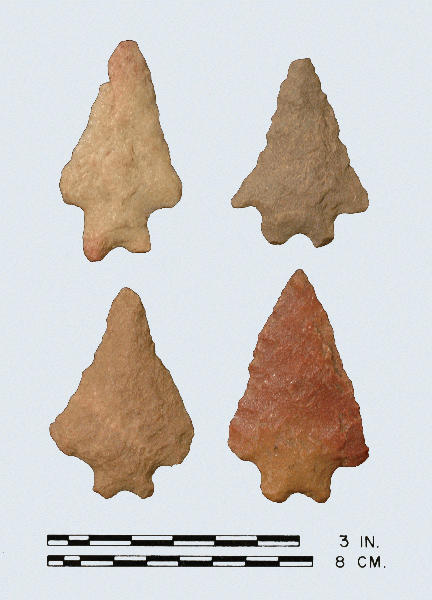
Stanly: all quartzite.
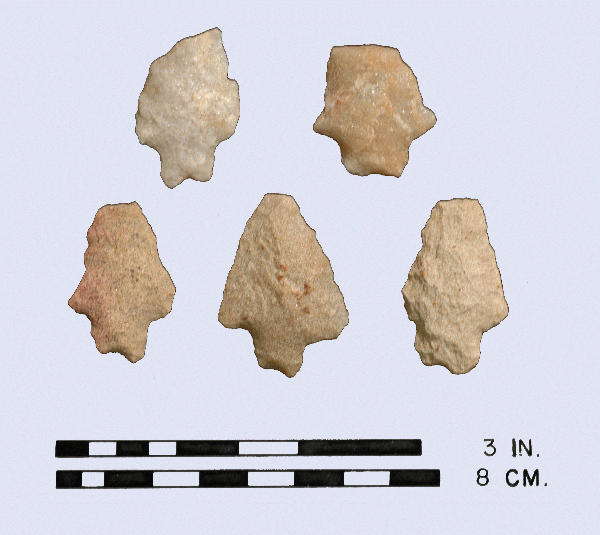
Stanly, small: all quartzite.
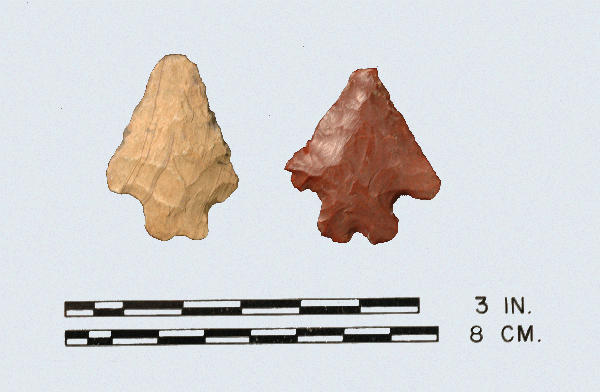
Kanawha: silicified slate, jasper.
Type Square Middle-Archaic
Defining Attributes
Stanly points have a broad triangular serrated blade with a small squared stem and a shallow notched base.
Chronology
The Stanly point dates to the Middle Archaic period, 6200 to 5000 BCE. Chapman (1977) recorded dates for Stanly of 5840 +/- 215 BCE at Icehouse Bottom and 5860 +/- 175 BCE on the Patrick Site. McAvoy (1997) recorded a date of 5470 +/- 160 BCE associated with Stanly period artifacts. Broyles (1971) dated the similar Kanawha point to 6210 BCE at the St. Albans site, West Virginia.
Description
- Blade: The blade is triangular and broad. The sides are concave and frequently have an angular projection at the shoulder and evidence of resharpening. Most specimens are serrated slightly along the sides of the blade, a few are serrated deeply. Some specimens are beveled as a result of resharpening.
- Base: The base is concave and thinned. The stem is small with parallel sides. The stem height is usually equal to its width. Coe noted that the stem was not ground at the Doerschuk Site, while McAvoy noted grinding on the shoulders and some stem along the Nottoway River.
- Size: Length ranges from 40 to 80 mm with an average of 55mm. Width ranges from 25 to 45 mm with an average of 35 mm.
- Technique of manufacture: Large flakes were struck off with a soft hammer in the initial shaping of the preform, but the final edge, together with the serration, was made by pressure flaking.
Discussion
Coe felt that Kirk stemmed type may be the ancestor of the Stanly and that the Stanly may have evolved into the Savannah River type. This would represent a Kirk to Savannah River continuum in stemmed point tradition. McAvoy (Egloff & McAvoy 1990) noted that Stanly points are rare in the Coastal Plain of Virginia, and are more common in the Piedmont and mountains. McAvoy (1997) noted a small variant of Stanly (length: 28 to 35 mm; width 20 to 25 mm; thickness: 4 to 6 mm) along the Nottoway River. The small variant has been seen at the Quail Spring Site in Virginia Beach and along the eastern scarp of the Dismal Swamp in Suffolk County. The Stanly type is closely related to the Kanawha type defined by Broyles (1971) for West Virginia. In New England this point form is referred to as a Neville type.
Defined in Literature
Coe (1964) defined the Stanly point from examples recovered from the deepest levels at the Doerschuk Site, North Carolina.
References

